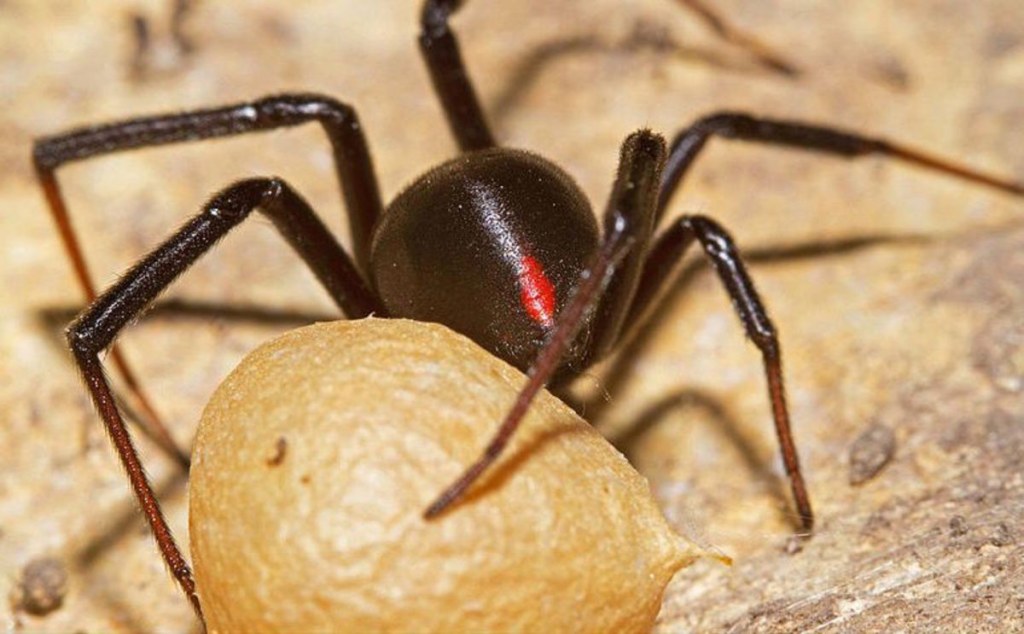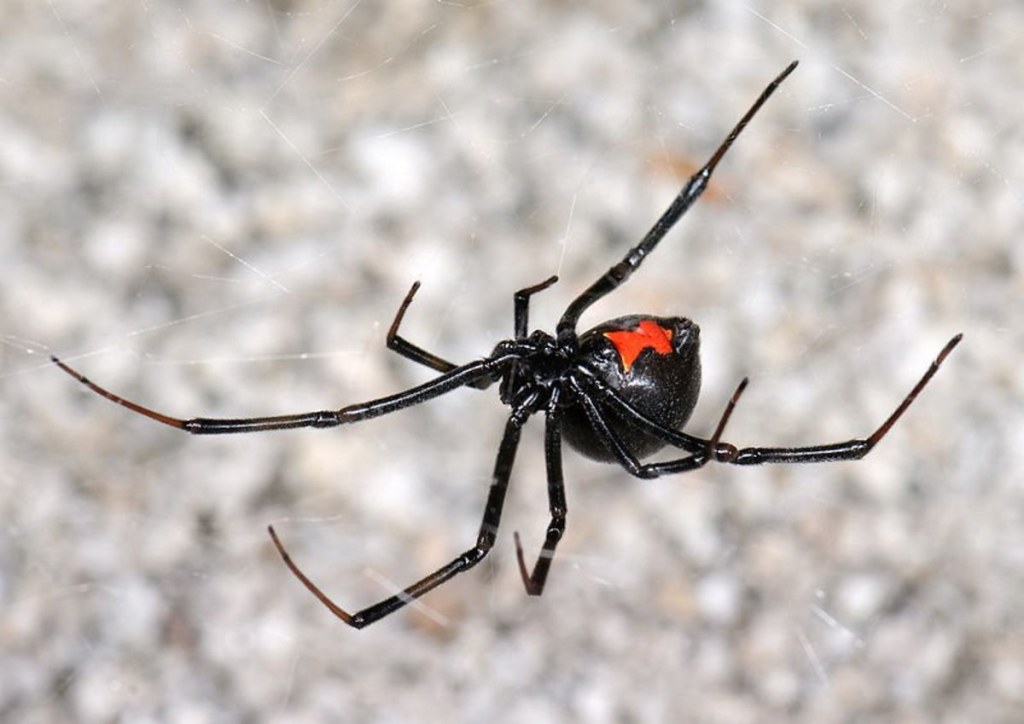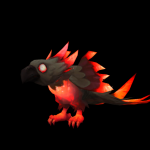Unleash The Power Of Black Widows As Extraordinary Pets: Embrace The Excitement!
Black Widows as Pets
Greetings, Pets Lovers!
Welcome to our article about black widows as pets. In this informative piece, you will learn all about the intriguing world of keeping black widows as pets. We will delve into the what, who, when, where, why, and how of having these venomous creatures as companions. So, let’s get started and explore the fascinating realm of black widows!
3 Picture Gallery: Unleash The Power Of Black Widows As Extraordinary Pets: Embrace The Excitement!



Table of Contents
Introduction
What Are Black Widows?
Who Should Consider Keeping Black Widows as Pets?
When Is the Right Time to Get a Black Widow?
Where Can You Find Black Widows?
Why Choose Black Widows as Pets?
How to Care for Black Widows?
Advantages and Disadvantages of Keeping Black Widows as Pets
FAQs About Black Widows as Pets
Conclusion
Final Remarks
Introduction

Image Source: saymedia-content.com
1. Black widows are one of the most infamous spiders in the world, known for their venomous bite and distinctive black coloration with a red hourglass shape on their abdomen. These arachnids have gained a reputation for fear and danger, but some individuals find them intriguing and choose to keep them as pets.
2. While black widows may not be the typical choice for a pet, they can be fascinating creatures to observe and study. However, it is important to note that keeping black widows as pets requires knowledge, experience, and careful handling due to their potentially lethal venom. It is not recommended for inexperienced or young pet owners.

Image Source: saymedia-content.com
3. In this article, we will provide all the essential information you need to know about black widows as pets, including their characteristics, care requirements, and the pros and cons of having them as companions. Read on to discover if keeping a black widow as a pet is the right choice for you.
4. Before delving into the details, it is crucial to emphasize that safety should always be the top priority when dealing with black widows. These spiders possess potent neurotoxins that can cause severe reactions in humans, especially in vulnerable individuals such as children or those with allergies. Therefore, extreme caution and responsible pet ownership are paramount.

Image Source: ytimg.com
5. Now, let’s explore the world of black widows and uncover the mysteries surrounding these enigmatic creatures. Whether you are a spider enthusiast or simply curious about unconventional pets, this article aims to provide valuable insights into the reality of keeping black widows as pets.
6. So, without further ado, let’s jump into the amazing world of black widows, where beauty and danger coexist, and discover what it takes to become a responsible black widow pet owner.
What Are Black Widows?
1. Black widows (Latrodectus spp.) are a group of venomous spiders belonging to the family Theridiidae. There are several species of black widows, with the most common being Latrodectus mactans in North America and Latrodectus hesperus in the western United States. These spiders are easily recognized by their shiny black bodies and the distinctive red hourglass shape on the underside of the female’s abdomen.
2. Female black widows are larger than males, measuring about 0.5 to 1 inch in body length, while males are typically half their size. The females’ venom is also more potent than that of males. Black widows are notorious for their venomous bite, which can be dangerous to humans. However, it is important to note that they only bite when threatened or disturbed.
3. Black widows are found in various habitats across the globe, including North and South America, Africa, Europe, and Asia. They prefer warm climates and can be found in dark, secluded areas such as woodpiles, sheds, or undisturbed corners of homes. Despite their intimidating reputation, black widows play a significant role in controlling populations of insects and other pests.
4. These spiders are known for their unique mating behavior, where the female may consume the male after mating. This behavior has contributed to their notorious reputation as the black widow. However, it is worth noting that not all females engage in this behavior, and it is primarily observed in captivity.
5. While black widows are typically solitary creatures, they can be kept in captivity under specific conditions. However, it is essential to understand their care requirements and potential risks before considering them as pets. Let’s explore who should consider keeping black widows as pets.
Who Should Consider Keeping Black Widows as Pets?
1. Keeping black widows as pets is not suitable for everyone. Due to their venomous nature, they require experienced and responsible owners who understand the risks associated with handling them. Therefore, only individuals with a genuine interest in spiders and a solid foundation of knowledge about arachnids should consider keeping black widows as pets.
2. Spider enthusiasts, experienced arachnid keepers, or individuals with a background in entomology may find black widows intriguing and choose to keep them as pets. These individuals have likely already gained experience in handling venomous spiders and possess the necessary knowledge to provide a safe and suitable environment for black widows.
3. It is crucial to note that keeping black widows as pets is not recommended for beginners or those with arachnophobia. The risks associated with handling venomous spiders, along with the specialized care requirements, make black widows a challenging choice for inexperienced individuals.
4. Additionally, responsible pet owners who prioritize safety and understand the potential dangers of keeping venomous creatures can consider black widows as pets. These individuals should be ready to invest time and effort into providing proper care, maintaining a secure enclosure, and following safety protocols when handling the spiders.
5. Before deciding to keep black widows as pets, prospective owners should thoroughly research their care requirements and consult with experts in arachnid husbandry. It is crucial to ensure that local regulations permit the keeping of venomous spiders as pets, as legal restrictions may vary depending on the jurisdiction.
6. If you meet the criteria mentioned above and have a genuine passion for spiders, you may find the experience of keeping black widows as pets rewarding. However, always remember that safety should be prioritized, and responsible pet ownership is the key to keeping both the spider and yourself out of harm’s way.
7. Now that we have identified the target audience for keeping black widows as pets, let’s explore when the right time is to get a black widow.
When Is the Right Time to Get a Black Widow?
1. Deciding when to get a black widow as a pet requires careful consideration of several factors. It is crucial to ensure that you are ready to commit to the responsibilities and potential risks associated with owning a venomous spider.
2. The right time to get a black widow as a pet is when you have thoroughly researched their care requirements, gained experience in handling venomous spiders, and have a suitable setup ready for the spider’s enclosure. Rushing into getting a black widow without sufficient preparation can lead to unfavorable outcomes for both the owner and the spider.
3. It is advisable to spend time observing and learning about black widows in their natural habitat or in controlled environments such as zoos or arachnid exhibitions before considering them as pets. This allows you to gain a deeper understanding of their behavior, interaction, and specific needs.
4. Additionally, it is essential to ensure that you have the financial means to provide for the spider’s care. This includes purchasing and maintaining a secure enclosure, acquiring proper food sources, and being prepared for any potential veterinary costs that may arise.
5. The right time to get a black widow as a pet also depends on your personal circumstances and lifestyle. Ensure that you have enough time to dedicate to the spider’s care, including feeding, cleaning the enclosure, and providing mental stimulation through environmental enrichment.
6. Consider your living situation and any potential risks associated with keeping a venomous spider in your home. It is crucial to maintain a secure enclosure to prevent any accidental escapes or potential harm to other household members, including pets and children.
7. Finally, the right time to get a black widow as a pet is when you are confident in your ability to handle and care for such a unique creature responsibly. If you meet all the criteria and feel ready to embark on the journey of having a black widow as a pet, then it may be the right time for you.
Where Can You Find Black Widows?
1. Black widows can be found in various regions across the globe, depending on the species. In North America, the most common species, Latrodectus mactans, is prevalent in the southern and eastern parts of the United States.
2. If you are interested in obtaining a black widow as a pet, it is crucial to understand the legal regulations and restrictions regarding ownership in your locality. Keeping venomous spiders as pets may require specific permits or licenses, and it is essential to comply with the applicable laws.
3. It is advisable to seek out reputable breeders or exotic pet stores that specialize in arachnids. These establishments are more likely to provide healthy and well-cared-for black widows compared to capturing wild specimens.
4. When obtaining a black widow as a pet, ensure that you choose a captive-bred specimen rather than a wild-caught one. Captive-bred spiders are generally healthier and less stressed, as they have not undergone the traumatic experience of being removed from their natural habitat.
5. Reputable breeders or stores can provide documentation and information about the spider’s lineage, health, and care requirements. This allows you to make an informed decision and ensures that you are acquiring a black widow from a reliable source.
6. Remember that responsible pet ownership includes supporting ethical practices and avoiding the illegal wildlife trade. By obtaining a captive-bred black widow from reputable sources, you contribute to the conservation of wild populations and discourage the capture of organisms from their natural habitats.
7. Now that we have covered where to find black widows and the importance of responsible acquisition, let’s explore why some individuals choose black widows as pets.
Why Choose Black Widows as Pets?
1. Choosing black widows as pets may seem unconventional, but there are several reasons why some individuals find them fascinating and decide to keep them. Let’s explore the motivations behind this unique choice:
2. Educational Value: Black widows provide an opportunity for individuals to learn about arachnids’ biology, behavior, and unique adaptations. Observing their intricate web-building skills, hunting techniques, and mating behavior can be a captivating educational experience.
3. Aesthetically Unique: Black widows stand out with their distinctive black coloration and red hourglass shape. For some individuals, their appearance is aesthetically appealing, and keeping them as pets allows them to appreciate their unique beauty up close.
4. Unconventional Pets: Some individuals are drawn to the idea of owning unconventional pets that challenge traditional notions of pet ownership. Keeping black widows as pets can be an exciting and unconventional choice for those seeking a different kind of companion animal.
5. Conservation Awareness: By keeping black widows as pets, individuals can contribute to raising awareness about the importance of spiders in ecosystems and dispel common misconceptions about these creatures. Educating others about their ecological role and dispelling myths can aid in their conservation efforts.
6. Personal Interest: Spider enthusiasts or individuals with a deep fascination for arachnids may naturally gravitate towards keeping black widows as pets. Their interest in studying, observing, and interacting with these creatures drives their decision to have black widows as companions.
7. It is crucial to emphasize that choosing black widows as pets requires a genuine interest, dedication, and responsible ownership. It is not a decision to be taken lightly, and the well-being of the spider should always be the top priority.
How to Care for Black Widows?
1. Caring for black widows as pets requires specific knowledge and attention to detail. Here are some essential care guidelines to ensure the well-being of your black widow:
2. Enclosure: Provide a secure and appropriately sized enclosure for your black widow. It should have adequate ventilation, escape-proof design, and be free of any potential hazards. A glass or plastic terrarium with a tight-fitting lid is commonly used for housing black widows.
3. Substrate: Use a suitable substrate for the enclosure, such as a mixture of peat moss and vermiculite. This substrate should retain moisture without being too damp or compact, as black widows prefer a slightly humid environment.
4. Temperature and Humidity: Maintain the enclosure’s temperature between 75°F and 85°F (24°C and 29°C), with a humidity level of 50% to 60%. You can achieve the desired humidity by lightly misting the enclosure with water or using a small water dish.
5. Lighting: While black widows do not require special lighting, providing a natural light-dark cycle can benefit their overall well-being. Avoid exposing the enclosure to direct sunlight, as it may cause overheating.
6. Feeding: Black widows are carnivorous and primarily feed on small insects, such as crickets, mealworms, or flies. Offer prey items appropriate to the spider’s size, ensuring that they are alive and properly gut-loaded to
This post topic: Pets



